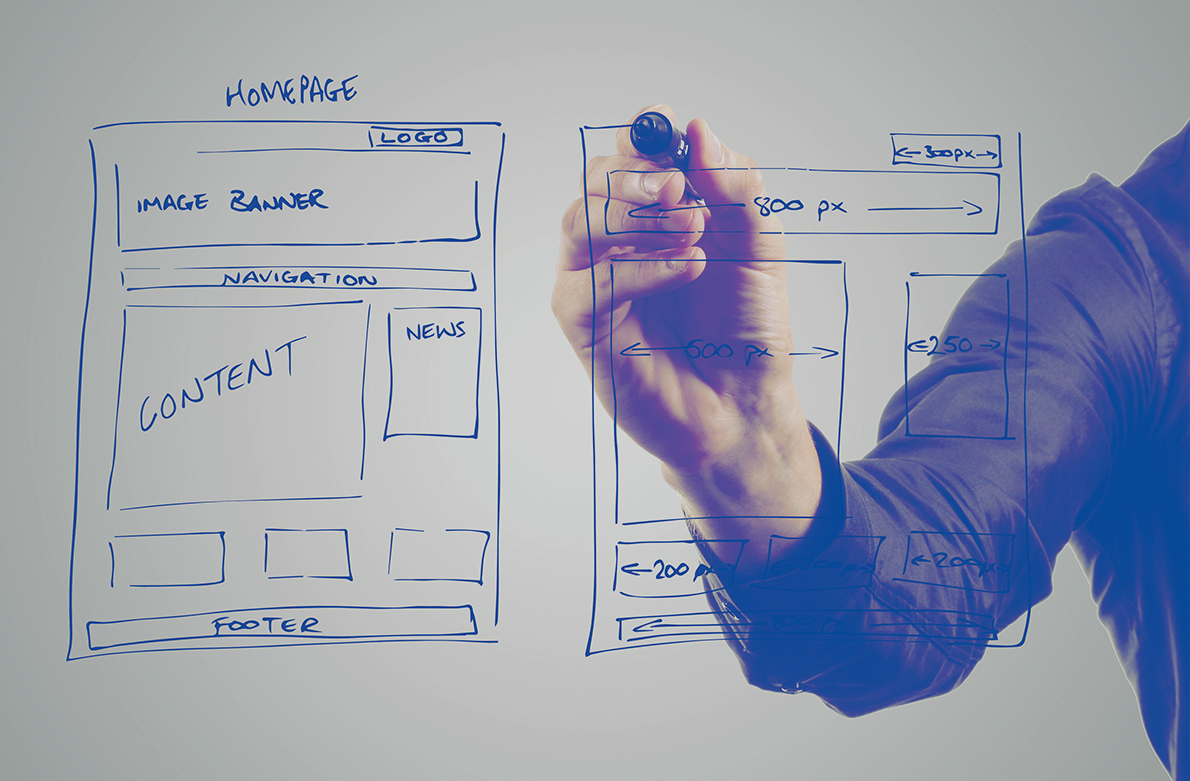Website design is not a one-and-done enterprise. Rather, it’s a continual work in progress. Yes, the final design, fonts, logo and graphics should remain fixed for quite some time; however, content, titles, meta descriptions, tags and so on, will evolve in response to the website users’ experience, the most recent Google algorithms, and inbound marketing trends.
To start, you’ll worry about things like looks, overall presentation, layout, mobile-friendliness, and general function. Then, you’ll continue with deeper-layer development aspects, such as content creation, social media integration, and more nuanced aspects of the user’s journey and experience.
Website development is where “continual” trial-error-success sequences repeatedly play out, as you get better and better at providing exactly what your target markets want, and at exactly the right time they want it. Thus, it’s best to prepare for a two-part process.
Phase 1: Website Design
In Phase 1, you’ll review your current website with the design team and talk about what’s working and what isn’t, what you like and what you don’t, the pages that have the highest click-thru rates as well as those that are as bouncy as a rubber ball.
The general answers to these questions will create a big picture idea of what needs to happen to create a website experience where more visitors to become qualified leads – and those qualified leads are nurtured into bona-fide sales.
Here are 5 important things to consider as you brainstorm ideas for a website that meets and exceeds your performance goals:
1. Simple is Always Better. There’s a reason why flash websites were only popular for about 5-minutes. The initial “flash” certainly got our attention – and then it was distracting, irritating and we did our best to quickly exit and regroup. Keeping that in mind, your website’s simple, straightforward nature will provide a certain sense of calmness and spaciousness for the user. They’ll stay a while, rather than bouncing away in a fog of sensory overload.
2. Colors Matter. In a perfect world, your brand’s logo would already have a design that is appealing, unique and color-savvy. If this is the case, you may not have to do anything here. However, there’s a chance that a color change is in order. Too many colors is complicated (and your goal is simplicity). The wrong color combinations can create a visual clash that is jarring. The key is to find colors that are attractive and resonate with your target markets.
3. Legibility. Website visitors are like bull riders, they have a hard time staying on for longer than 8-seconds. Obviously, complicated text or a mishmash of graphics will make it difficult to digest pertinent information, so use easily-readable fonts, and balance text/graphics with whitespace, so content is easily scannable.
4. The Just-Enough Approach to Graphics. By now, it won’t surprise you when we say to keep your graphics to a reasonable minimum. Images, videos and graphics are important, but should only be used to highlight key points or to inspire action. They should never be superfluous additions.
5. Navigability & Consistency These two go hand-in-hand. Website/page layouts should be designed so the most important (often actionable) elements are the automatic visual draw. This will make the site easier to navigate. Visual consistency throughout the site will enhance the flow, making it easier for visitors and customers to mentally transition from page to page.
6. A Modicum of Tradition. A little bit of “new” is good, but there are some things that online visitors have come to expect, and that make it easier for them to navigate your site. Maintain traditional website basics, like page navigation at the top or different colors for links, to increase user comfort-ability.
7. Accessibility. According to Google, “more Google searches take place on mobile devices than on computers in 10 countries including the US and Japan.” Your site must be accessible and compatible across the mobile device and gadget spectrum. Responsive designs being the norm for most top-performing websites.
Phase 2: Website Development
Website development should never cease. The way visitors and users respond to your website feeds you continual information about what works and what doesn’t, so the website’s content can be adapted accordingly.
1. Know Your Target Markets. You absolutely cannot develop a successful website if you don’t intimately know Who you’re developing it for. Know the markets and your content will be infinitely more appealing. For greater inbound marketing appeal, don’t overlook the niche markets that are nesting within the main markets.
2. Use Metrics. If you aren’t friendly with metrics and analytics, it’s time to hire someone who is. Developing a website requires setting benchmarks, tweaking content, A/B testing, re-analyzing metrics – and you do this over and over again. It’s amazing what you learn about how visitors respond to your content, and it’s exhilarating to make research-driven changes that get immediate, notable results.
3. Choose the Right CMS. A content management system can make or break your website. If you’ll be handling most of the content development yourself, it must be user-friendly. Even if you’re hiring someone else to manage your website for you, basic CMS elements should be easy enough for your marketing/sales teams to access as needed.
When these core website development components are in place, everything else – website content, blogs, social media posts, eBooks, white papers, CTAs and landing pages – become easier and easier to map out, plan and integrate.
Are you looking for web, mobile or digital marketing services ?
contact us now.

